 Indians Archive
Indians Archive  Cleveland Sports Vault: Tribe “Deep Tracks” Trivia, Vol. 2
Cleveland Sports Vault: Tribe “Deep Tracks” Trivia, Vol. 2
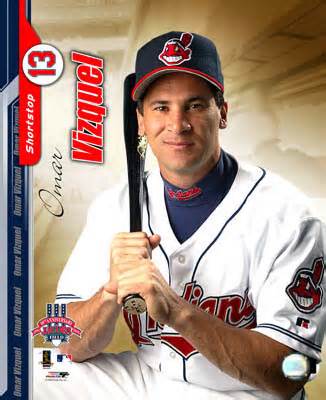 As a born and bred Clevelander, I am all about the Rock ‘n Roll. I am of the generation of Album Oriented Rock (AOR), the 70s radio format featuring longer, more obscure, and less-repeated songs than the ones the Top-40 stations played. (In its heyday, AOR stations were even known to play bootleg recordings of local concerts, complete with muffled coughs and hushed comments- surreptitious versions that were spirited out of concert halls in a manner worthy of Cold War espionage.)
As a born and bred Clevelander, I am all about the Rock ‘n Roll. I am of the generation of Album Oriented Rock (AOR), the 70s radio format featuring longer, more obscure, and less-repeated songs than the ones the Top-40 stations played. (In its heyday, AOR stations were even known to play bootleg recordings of local concerts, complete with muffled coughs and hushed comments- surreptitious versions that were spirited out of concert halls in a manner worthy of Cold War espionage.)
Into the latter part of the decade, WMMS carried the banner. They announced the weekend with their weekly, 5pm Friday broadcast of the “Friday on my Mind”, “Switchin’ to Glide”, “Born to Run” troika. A heavy dose of Murray Saul (right) was wedged in there, with a gravelly narrative on why he was ready for “FRRIIIIDAYYYYY. FRIIIIIIIIII-IIIII-IIIIIIII, DAY.”
Of course, most of my musical tastes remain rooted in that era. Someone recently asked me if I had heard the “new Bowie”, because it’s really good. I assumed they were talking about “Let’s Dance”, from the mid-1980s -or maybe its crappy follow up album. (Sure, I have that vinyl record in one of my peach crates. It’s been in the rotation- along with Beatles and Blondie albums- for covering up that Abba album that represents the first record in the crate, alphabetically speaking. Unfortunately.)
-or maybe its crappy follow up album. (Sure, I have that vinyl record in one of my peach crates. It’s been in the rotation- along with Beatles and Blondie albums- for covering up that Abba album that represents the first record in the crate, alphabetically speaking. Unfortunately.)
 These days, what is now (ever since the mid-90s) referred to as Classic Rock is still very accessible. The FM radio stations that play the genre never get very adventurous, but they have their moments. On Memorial Day Weekend- the weekend of the Indianapolis 500 race- some of these stations play their top 500 Classic Rock songs list. How many Stones tunes will be on there? How many Pink Floyd? What? Bang-a-Gong in the 400s?!?! Gimme a break! And there better not be ANY Phil Collins ahead of ANY CCR or Clapton!!!
These days, what is now (ever since the mid-90s) referred to as Classic Rock is still very accessible. The FM radio stations that play the genre never get very adventurous, but they have their moments. On Memorial Day Weekend- the weekend of the Indianapolis 500 race- some of these stations play their top 500 Classic Rock songs list. How many Stones tunes will be on there? How many Pink Floyd? What? Bang-a-Gong in the 400s?!?! Gimme a break! And there better not be ANY Phil Collins ahead of ANY CCR or Clapton!!!
So it’s fun. Soooo many chances to talk smack with your wife (of course, women generally can’t stand Rush, and much of the “Led” side of Led Zeppelin); with your neighbor at the backyard barbecue… (I would loooove the countdown to play through Number 1, with no “Stairway to Heaven”. Not because it doesn’t belong. I would just like to see the reaction.)
For 70s-centric rock fans who want more variety, there are plenty of options. For that, we can thank the convergence of Generation Y technology (eg. Sirius XM) with the huge Baby Boom contingent who loves the stuff. The “Deep Tracks”-type of stations definitely do not disappoint, featuring the kind of musical variety that pleases and challenges any hard-core devotee.
With this in mind, take a shot at some “deep tracks” Tribe trivia. After all, you moved past “Cleveland Indians 101” long ago. My intent is to keep it fun, while avoiding a lot of low-hanging fruit you may commonly find elsewhere (stated with all due respect). Feel free to share your own thoughts, or to disagree with mine.
1) Omar Vizquel remains one of the most enduringly popular Tribe players ever, having anchored the terrific infield of those playoff contending teams of the 1990s. It's seldom “Vizquel.” It’s always “Omar.” Per baseball-reference.com, here are the big-league transactions involving Omar’s career:
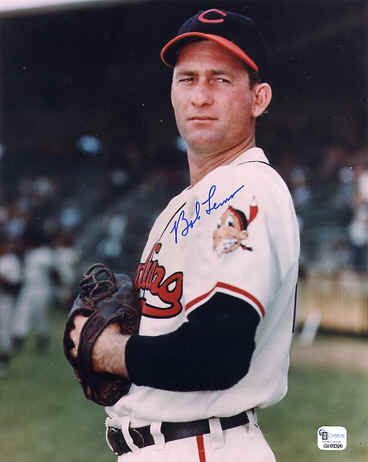
Wait: Didn’t the Indians trade him, circa 2003? I don’t see that on there. Am I crazy? (Uh, let me clarify the question. Am I in possession of a faulty memory on this point of Tribe history?)
2) In the 1948 World Series vs. the Boston Braves, the Indians found themselves down one game to none. Taking the mound for Cleveland was Bob Lemon, a top pitcher of his day. But in the first inning, Lemon was teetering on the brink of being removed from the game. Shortstop/manager Lou Boudreau had the bullpen busy. There were runners on first and second, with a run in. There was only one out in the inning. Just as the next batter stepped to the plate, 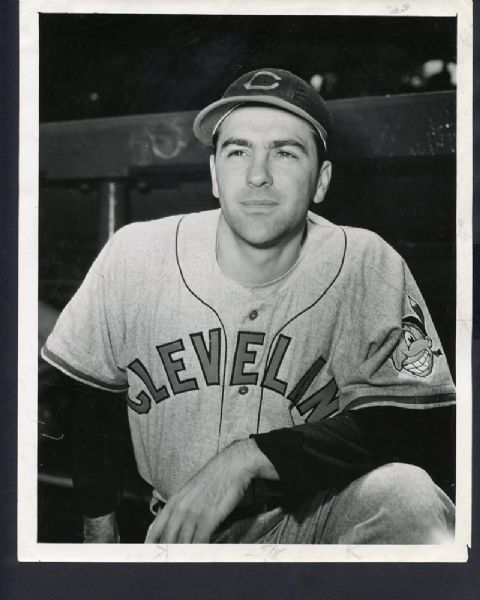 something took place to turn the tide and help Lemon get out of the inning.
something took place to turn the tide and help Lemon get out of the inning.
What happened? And: how had it been foreshadowed in Game One?
3) Speaking of 1948, the Cleveland Indians finished the regular season with the same record as the Boston Red Sox. An historic one-game playoff was to be played, to decide the A.L. pennant.
Lou Boudreau (right) made a couple controversial decisions for the game with the Red Sox. For one, taking the mound would be a rookie, Gene Bearden. The knuckleball pitcher would be throwing on two days’ rest.
Boudreau made a decision involving his infield that had observers shaking their head. Explain.
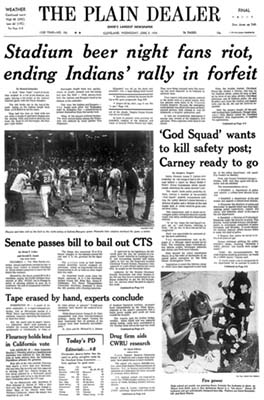 4) Ten Cent Beer Night, in 1974, resulted in an out-of-control riot (as opposed to a completely-under-control riot, I suppose) during a game against manager Billy Martin’s Texas Rangers.
4) Ten Cent Beer Night, in 1974, resulted in an out-of-control riot (as opposed to a completely-under-control riot, I suppose) during a game against manager Billy Martin’s Texas Rangers.
The Cleveland Indians brain trust decisively declared this first-of-its-kind event would never be held again.
**** This statement contains three fallacies. One of them is that those Cleveland Indians boasted anything approaching a “brain trust.” What are the other two fallacies?
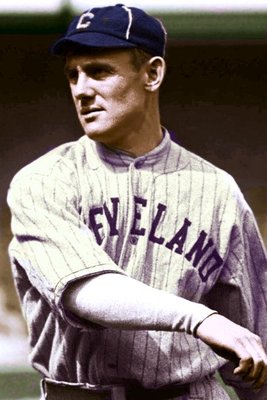 5) In 1915, the Indians had money troubles (wow, even then). The newspapers- the hub of information in the day- caught wind that shortstop Ray Chapman (right) had been on the block. A deal had been in place to move him and another player in a deal that would improve the Indians’ financial position. The other player indeed was soon moved. Chapman stayed. While the trade of the other player had fans shaking their heads, the knowledge that the star shortstop had been dangled as well resulted in a furious backlash.
5) In 1915, the Indians had money troubles (wow, even then). The newspapers- the hub of information in the day- caught wind that shortstop Ray Chapman (right) had been on the block. A deal had been in place to move him and another player in a deal that would improve the Indians’ financial position. The other player indeed was soon moved. Chapman stayed. While the trade of the other player had fans shaking their heads, the knowledge that the star shortstop had been dangled as well resulted in a furious backlash.
Who was the other player- an all-time baseball great?
6) In 2002, a particular seagull frequented Jacobs field. Officials tried to shoo it away from the game, but it kept hanging around. Its ‘spot’ was several feet away from first baseman Jim Thome. It flew off for good, during a particular moment.
What meaning did dozens of Indians players and staff attribute to the gull?
7) This Indians outfielder became a historically good hitter, and was clutch. Not a lot of things bothered him. One day, something did upset him. He couldn’t find his gold chains- which he wore while playing. He asked the clubhouse manager to go down to his car to see if they were there. The clubhouse manager located the chains in a suitcase- but 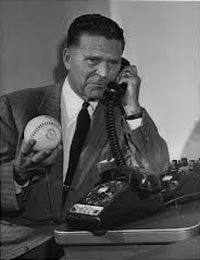 not before checking the glove box, where he discovered three or four payroll checks. They represented a lot of money, and were uncashed. Who was the ball player?
not before checking the glove box, where he discovered three or four payroll checks. They represented a lot of money, and were uncashed. Who was the ball player?
What is his most famous nickname, and who gave that to him?
8) Frank “Trader” Lane was the Indians general manager in the late 1950s. He was renowned for trading almost anything that was not bolted down. He was vilified throughout Cleveland after trading the fans’ favorite, RF Rocky Colavito.
But some players liked Lane (it helped if he traded for them). In an era when baseball GMs controlled players and dictated contracts, he was known to reward players who’d had a good season with a modest bonus.
One particular player enjoyed such a bonus, in 1959. He’d earned it, with a great season at the plate. He was the Indians’ best hitter.
Prior to his years in Cleveland, this player was with Detroit. He’d tried to convince the GM there to give him a slight raise. The request was refused.
Years later, the son of this player was a baseball star at the University of Arizona. Montreal selected him in the amateur draft. The GM for the Expos was the same man who’d been the Tigers’ GM back in the 50s.
The father insisted on negotiating the son’s contract. Recalling his frustration years earlier with the GM, he played hardball with him now. It worked- gaining the 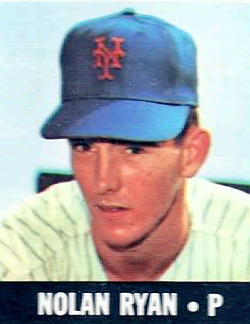 son a nice signing bonus.
son a nice signing bonus.
Who was this father/son tandem?
9) This pitcher was signed by the Indians in the 1940s, with instant big-league success. Years later, he had a conversation with the very young Nolan Ryan. Ryan has recounted their conversation- the old-timer asked him if he knew what the best pitch was.
Ryan said, “Fastball?” The old-timer said, “No, the bow tie.” He drew his hand across his throat, and said, “The fastball, right here.” High and tight. The lesson was learned.
Who was the old-timer?
10) Indians pitcher Buddy Black, whom the Tribe had acquired via a trade involving 1B Pat Tabler, pitched a complete game victory in game that was also the first win for this notable Indians manager. Who was this manager?
_________________________________________________________________________________________________________________________
Here are the answers:
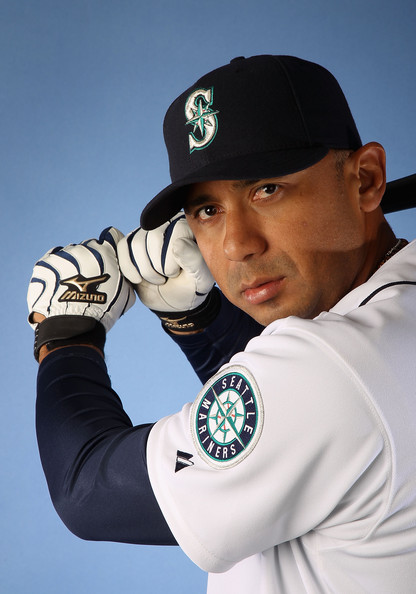 1) After the 2002 season, the Indians were not done selling. They traded the fan favorite to the Seattle Mariners. As they had done in the past, Cleveland swapped shortstops (they’d traded Jay Bell to Pittsburgh for Felix Fermin, and later dealt Fermin for Vizquel- in a trade with Seattle).
1) After the 2002 season, the Indians were not done selling. They traded the fan favorite to the Seattle Mariners. As they had done in the past, Cleveland swapped shortstops (they’d traded Jay Bell to Pittsburgh for Felix Fermin, and later dealt Fermin for Vizquel- in a trade with Seattle).
Omar was 36 years old, and rehabbing from two surgeries to his right knee. After a failed attempt to land top free agent Miguel Tejada, the Mariners hoped to reacquire him, intending to send Carlos Guillen to Cleveland.
Unfortunately, Vizquel failed his physical and the trade was nullified. Guillen re-signed with the Mariners for one year, before performing well over several seasons with the Tigers.
2) Bob Feller had started for the Indians in the ’48 Series opener. The game was scoreless, into the eighth inning. The Boston Braves had a pinch runner on second. Feller and SS Lou Boudreau had a pickoff play called, and everyone in the ball park saw that the runner was tagged out. Umpire Bill Stewart blew the call. Apparently, he was caught off guard and just got it wrong.
In Game Two, with Tribe starter Bob Lemon in trouble, the Indians put the same pickoff play on. Again, the tag by Boudreau was in time. The umpire at second base that day was alert- he called the out, and Lemon got out of the inning. Forever afterward, Lemon maintained that Feller’s heartbreak (not only would he lose Game One, but he would never win a World Series game) benefitted him.
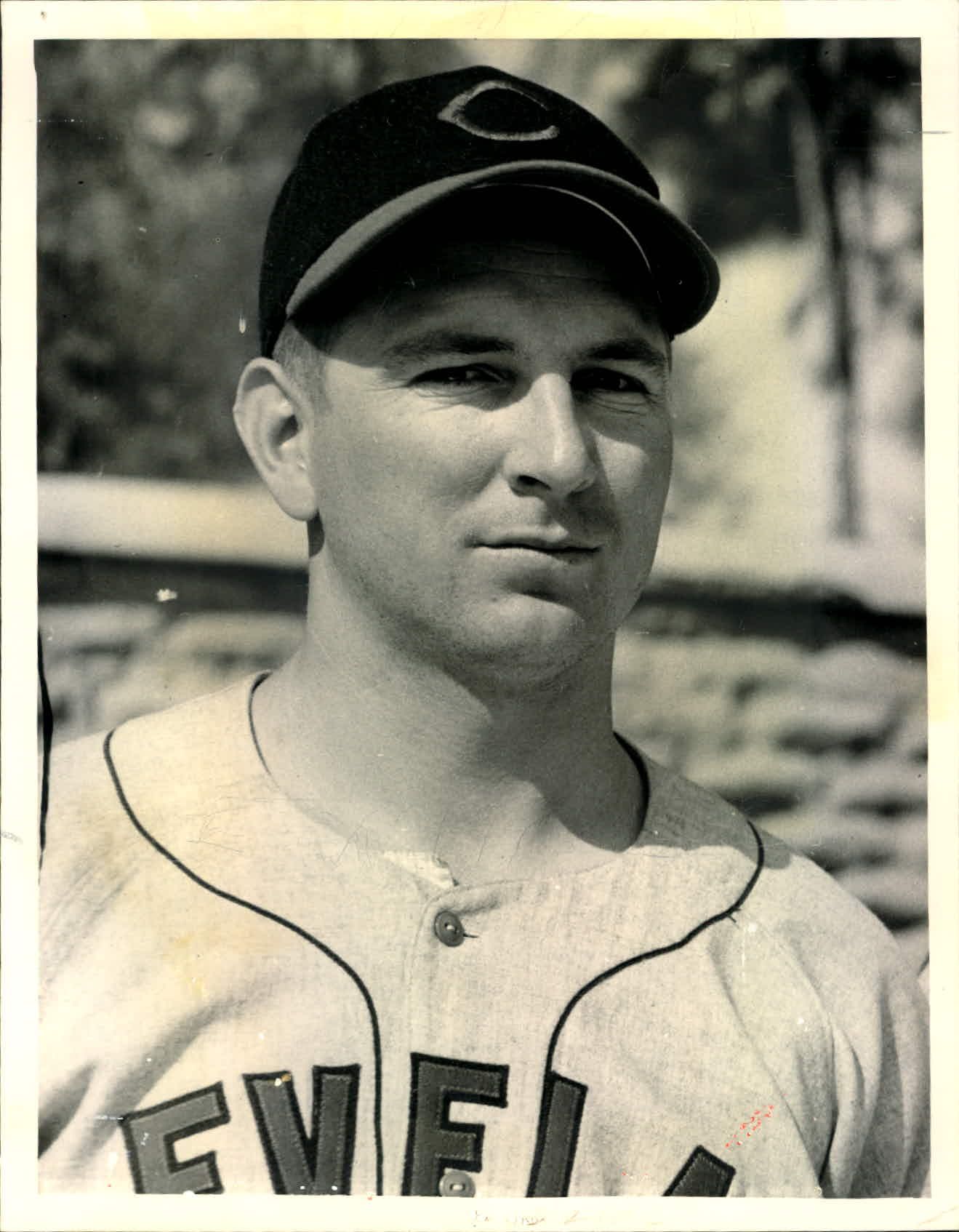 3) Boudreau’s decision to start Bearden in the playoff was sharply questioned- but it paid off. Another decision was putting outfielder Allie Clark (right) at first base. Reportedly, VP Hank Greenberg and owner Bill Veeck were incensed (Veeck, especially, did not respect Boudreau’s capabilities as a manager, and had intended to fire himbefore a public protest helped to convince him not to). Apparently, Boudreau was trying to stack the lineup with right handed bats.
3) Boudreau’s decision to start Bearden in the playoff was sharply questioned- but it paid off. Another decision was putting outfielder Allie Clark (right) at first base. Reportedly, VP Hank Greenberg and owner Bill Veeck were incensed (Veeck, especially, did not respect Boudreau’s capabilities as a manager, and had intended to fire himbefore a public protest helped to convince him not to). Apparently, Boudreau was trying to stack the lineup with right handed bats.
Clark prayed that balls would not be hit to him. He did field his position well, fielding a grounder and taking throws. He went 0 for 2, and was lifted in the fourth inning with the Indians up by 4.
Clark held a lot of respect for his manager, insisting that if the move had backfired, Boudreau would have taken all responsibility.
3B Al Rosen had gotten a late-night wakeup visit from Bearden the night before the game. Bearden informed him he would be playing first base. Rosen remained nervous the rest of the night, barely sleeping. Either Bearden was mistaken, or Boudreau changed his mind.
4) Ten Cent Beer Night still kind of turns my stomach. Just the whole vibe. Players, armed with bats, marching out to rescue teammates. Ranger and future Indians fixture Mike Hargrove fighting his way to the dugout. (It was said Hargrove kept a photo of this on the wall in his manager’s office in Cleveland.)
But for the Indians, this wasn’t the first of their cheap beer promotions. The original was three years earlier- a nickel beer night. (According to Wikipedia, regular price of a stadium beer in 1974 was 65 cents).
Of course, the 1974 game itself had become a grudge match. A week earlier, Billy Martin’s Rangers had brawled with the Indians, in Arlington. Some fans got their shots in, throwing items at the players.
But not only was that not the first event of its kind, but it wasn’t the last, either. Later in that 1974 season, a previously scheduled Beer Night was held. Patrons 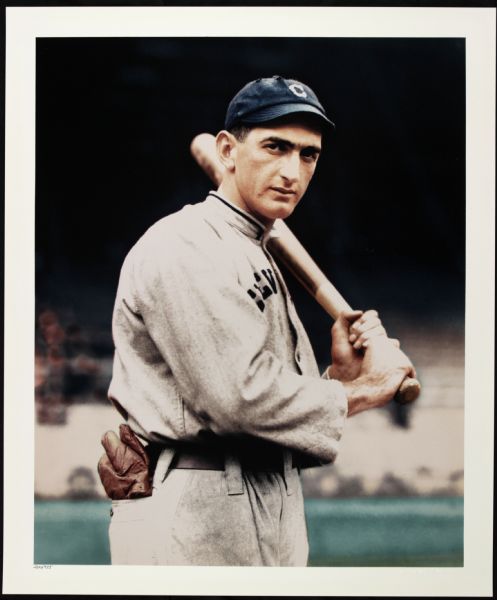 were limited to two beers per purchase.
were limited to two beers per purchase.
(The story kind of reminds me of the burning of the Cuyahoga River. It had burned several times in the 1950s and 1960s. In fact, several waterways around the country had similarly caught fire. In a move that appears fueled by noble motives, local leaders alerted the nation’s media to the Cuyahoga. Cleveland became a lightning rod for the environmentalist movement. Obviously, the public relations fallout was devastating.)
5) The player traded was “Shoeless Joe” Jackson (left, sporting the next cap I will buy). He, of course, would be in the Hall of Fame if it weren’t for his role in the Black Sox Scandal during the 1919 World Series. Described as somewhat of a simpleton, some believe he was easily influenced by others. He did agree to help fix Series games, but it is said he ultimately accepted no money.
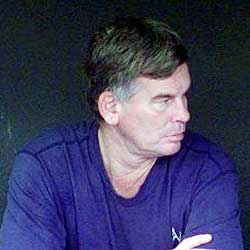 The Indians would win the World Series in 1920. Of course, Chapman was killed by a thrown pitch during the regular season that year.
The Indians would win the World Series in 1920. Of course, Chapman was killed by a thrown pitch during the regular season that year.
6) Jimmy Warfield was a deeply loved and respected trainer with the Indians, over several decades. Warfield died in 2002, at age 60, as a result of a brain hemorrhage. In the weeks that followed, a gull stood on the playing field at the Jake during home games. Many members of the team (Omar Vizquel, Jim Thome, CC Sabathia, Jake Westbrook, Matt Lawton, Milton Bradley, and Sandy Alomar, Jr, to name a few) thought the bird was either sent by Warfield from the great beyond- or embodied his spirit.
Adding to the intrigue was when the bird flew away during a memorial service at the ball park- apparently never returning.
7) Manny Ramirez. It was part of “Manny being Manny.” At the time, Charlie Manuel was the Indians’ manager. But that moniker was first uttered by Manny’s previous manager, Mike Hargrove.
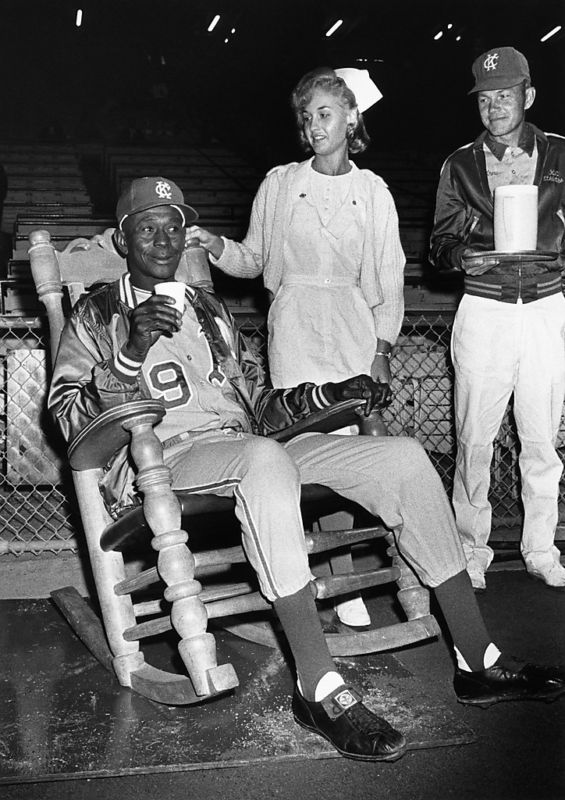 8) The father/son tandem was Tito and Terry Francona. See photos below.
8) The father/son tandem was Tito and Terry Francona. See photos below.
9) The old-time pitcher who gave the advice to a young Nolan Ryan was Satchel Paige. Paige was brought back to pitch for one game, for an official "retirement" by Kansas City Athletics owner Charlie O. Finley. The photo at the left was his 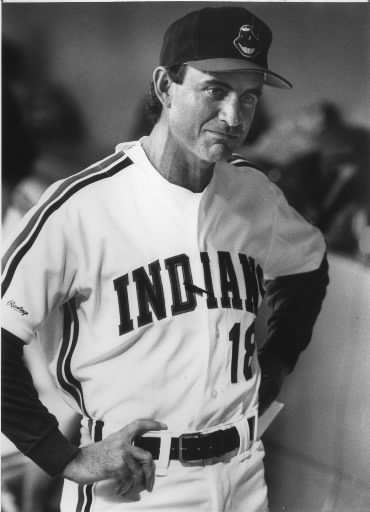 routine- between innings! He was said to be 59 years old.
routine- between innings! He was said to be 59 years old.
(The stories involving Paige are so legendary that it is tough to give more clues without giving away the answer.)
10) The manager for whom Buddy Black earned his first win was John Hart. He had been a minor league manager in the Baltimore Oriole organization, back to 1982. In 1989, Tribe GM Hank Peters (whom had also spent much of a career in Baltimore, after an earlier stint in Cleveland) hired Hart as a scout. Hart was installed as the interim manager at the end of the 1989 season, going 8-11. He replaced Peters as Tribe GM in 1991.
Sources included several books published by Russell Schneider, notably The Cleveland Indians Encyclopedia, Tales from the Tribe Dugout, and Whatever Happened to Super Joe?...
***Hey, follow me on Twitter! http://twitter.com/googleeph2 #thanks
Tito and Terry
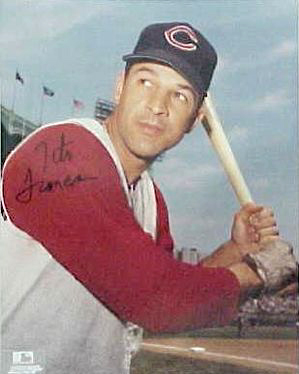
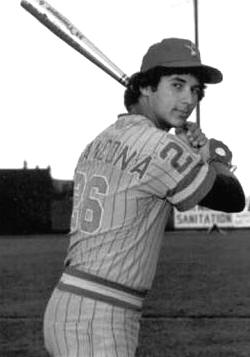
- NBA Announces 2013-2014 Schedule
- Browns Ink Sharknado
- Sharknado A No-Show For Rookie Camp
- Trent Richardson Out Until Training Camp
- Browns Sign Brandon Jackson
- Carrasco Suspended Eight Games
- Browns Add to Wide Receiver Depth with David Nelson
- Browns Need to Learn from Past Draft Mistakes
- Browns Release Chris Gocong and Usama Young
- Browns Missing on Grimes Disappointing, But Not The End
The TCF Forums
- Chris Grant's first 3 drafts
Kingpin74 (Tuesday, January 21 2014 10:13 AM) - The 2014 Offseason Thread
googleeph2 (Tuesday, January 21 2014 9:36 AM) - 2015 Recruiting
furls (Tuesday, January 21 2014 6:57 AM) - Mike Brown
YahooFanChicago (Monday, January 20 2014 11:15 PM) - Movies coming out
HoodooMan (Monday, January 20 2014 9:34 PM) - 2014 Hoops Hockey Hijinx
jpd1224 (Monday, January 20 2014 4:44 PM) - 2014 Recruiting
jclvd_23 (Monday, January 20 2014 2:26 PM) - Wish List - #4 Pick
Hikohadon (Monday, January 20 2014 1:26 PM) - Official- Browns Coach Search/Rumors
OldDawg (Sunday, January 19 2014 6:48 PM) - #1 overall pick Anthony Bennett
TouchEmAllTime (Sunday, January 19 2014 1:28 PM)




